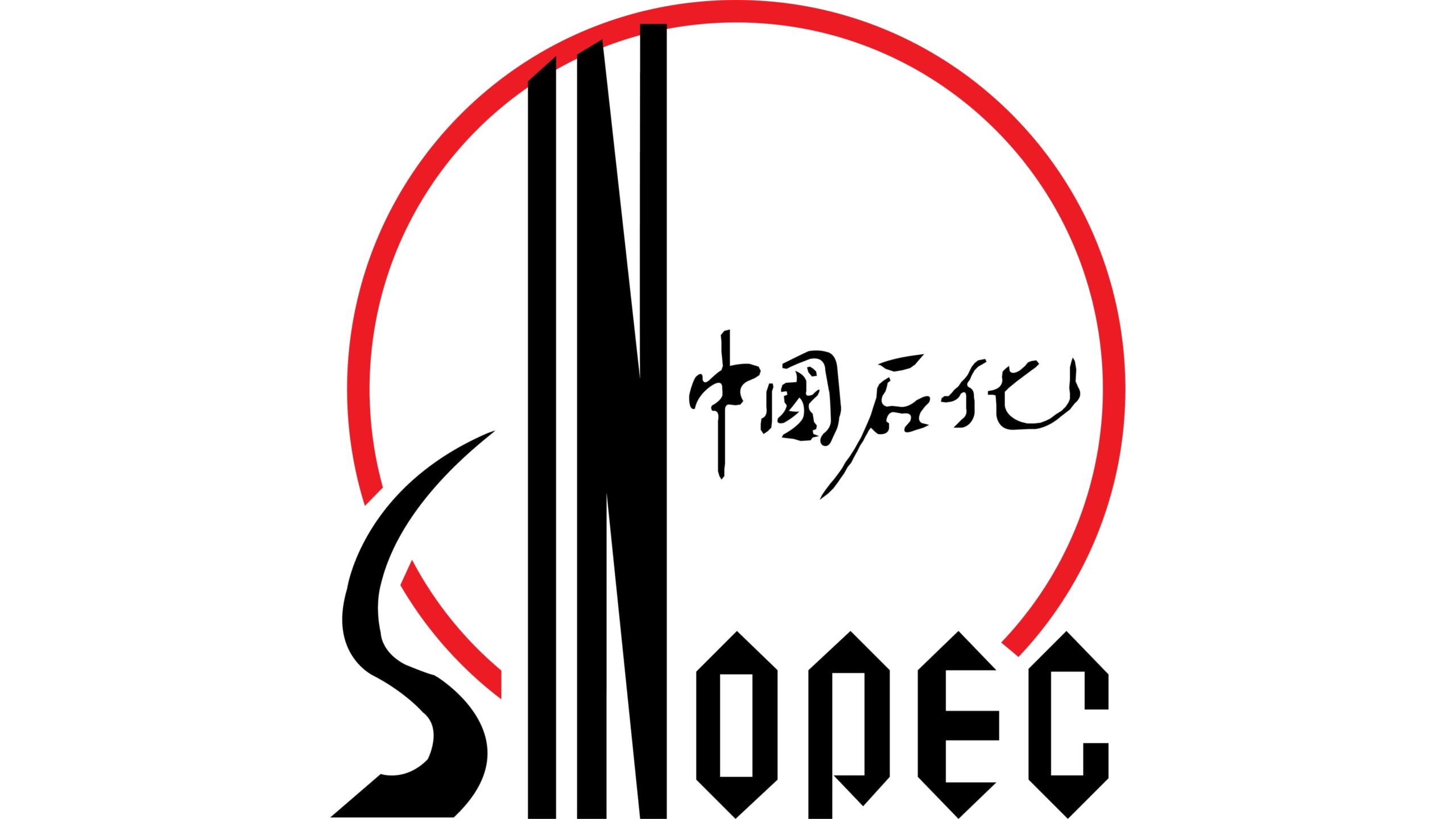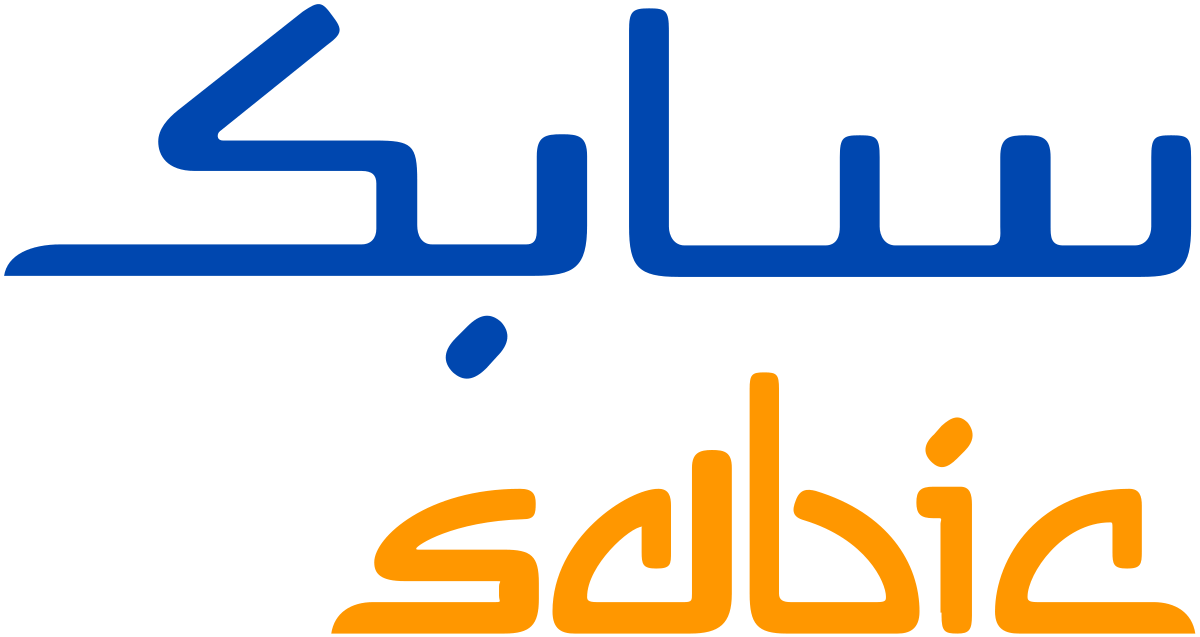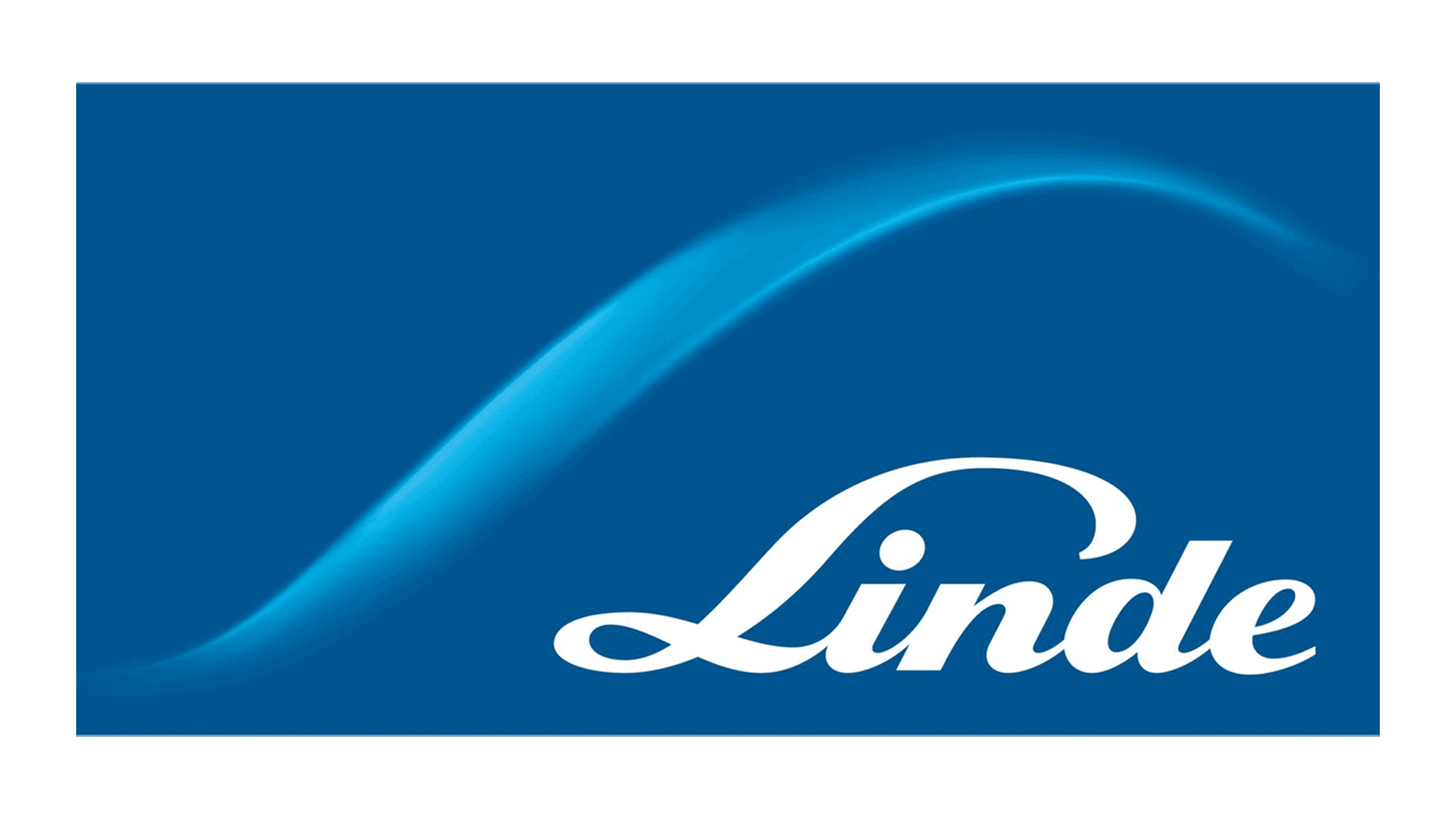Global Medical Plastics Market By Material Type, By Application, By Region & Segmental Insights Trends and Forecast, 2024 – 2034
- Industry: Chemicals & Materials
- Report ID: TNR-110-1266
- Number of Pages: 420
- Table/Charts : Yes
- August, 2024
- Base Year : 2024
- No. of Companies : 10+
- No. of Countries : 29
- Views : 10056
- Covid Impact Covered: Yes
- War Impact Covered: Yes
- Formats : PDF, Excel, PPT
Global medical plastics market is a rapidly growing sector, essential to the modern healthcare industry. Medical plastics, characterized by their lightweight, biocompatibility, and versatility, have become integral to producing medical devices, diagnostic instruments, surgical tools, and pharmaceutical packaging. The rising demand for high-quality healthcare services, coupled with innovations in medical technology, has significantly propelled the growth of the medical plastics market.
Market Overview: Global Medical Plastics Market
Global medical plastics market has evolved from basic materials used in packaging and disposables to sophisticated compounds utilized in complex medical devices. The medical plastics market encompasses various polymer types, including polyvinyl chloride (PVC), polypropylene (PP), polyethylene (PE), polystyrene (PS), and engineering plastics like polyether ether ketone (PEEK). Each of these materials offers specific properties suited to different medical applications, from flexible tubing to durable implants.
In 2023, the global medical plastics market was valued at approximately USD 53.4 Bn, with a projected compound annual growth rate (CAGR) of 8.3% over the next decade. The growth is primarily driven by the increasing demand for disposable medical products, advancements in medical device technology, and the rising prevalence of chronic diseases requiring long-term care solutions.
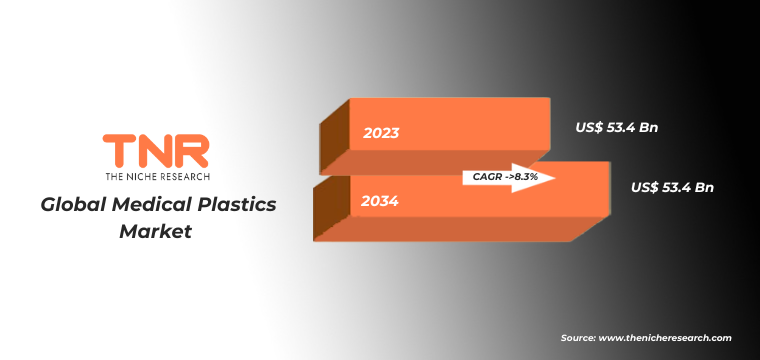
Market Evolution: Global Medical Plastics Market
Medical plastics market has undergone significant evolution over the past few decades. Initially, plastics in the medical field were primarily used for basic applications like packaging and disposable products, such as syringes and tubing. However, with advances in polymer science and manufacturing technologies, the market has expanded to include highly specialized materials used in complex medical devices, implants, and diagnostic equipment. The introduction of engineering plastics and polycarbonates, has revolutionized the industry by providing materials that can withstand sterilization processes, offer high strength, and maintain biocompatibility. Moreover, the shift towards minimally invasive surgeries and the development of advanced prosthetics have driven demand for plastics that can be molded into intricate shapes and customized for individual patients. The advancement of 3D printing technology has revolutionized the market by facilitating the creation of customized implants and surgical instruments tailored to individual patient needs. Over time, the focus has also shifted towards sustainability, with increasing research and development in biodegradable and bio-based plastics, addressing environmental concerns associated with medical waste.
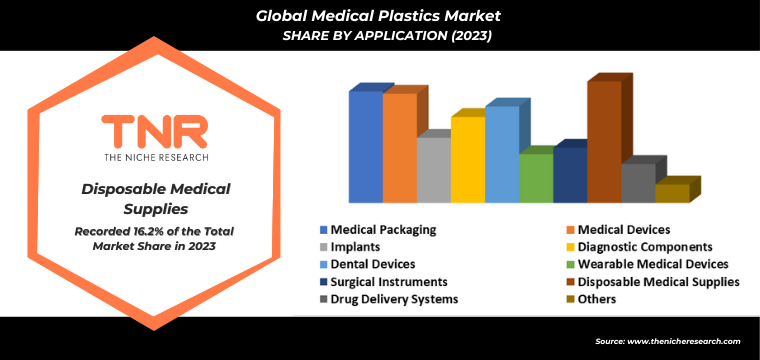
Polyvinyl Chloride (PVC) was the dominant material in the medical plastics market in 2023, primarily due to its versatility, cost-effectiveness, and adaptability to various medical applications. PVC is widely used in producing both flexible and rigid medical products, including intravenous (IV) bags, blood storage containers, catheters, and surgical gloves. Its chemical resistance, biocompatibility, and ability to maintain sterility under various conditions make it indispensable in healthcare settings.
In 2023, PVC accounted for approximately 38% of the global medical plastics market share, underscoring its significant role in the industry. The demand for PVC in medical applications is driven by the growing emphasis on single-use medical devices, which are critical in preventing cross-contamination and maintaining hygiene in hospitals and clinics. The material’s low cost and ease of processing also contribute to its widespread adoption, especially in developing regions where cost constraints are a major concern. Furthermore, PVC’s applications extend to medical packaging, where it is used for blister packs, medical trays, and pharmaceutical packaging. The material’s barrier properties ensure that medical products are protected from contamination and environmental factors, further enhancing its appeal. The market for PVC in the medical sector is expected to continue growing, with a projected compound annual growth rate (CAGR) of around 8.76% from 2024 to 2034, driven by increasing healthcare expenditures and the expanding use of disposable medical devices.
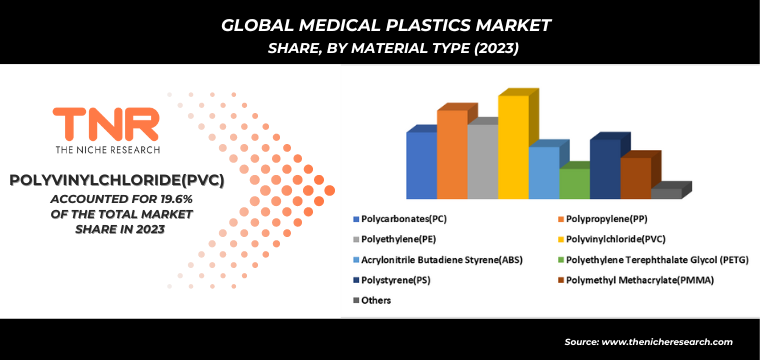
North America was the largest region in the medical plastics market, driven by its high healthcare spending, advanced medical infrastructure, and strong regulatory framework. In 2023, the U.S. alone accounted for approximately USD 4.3 trillion in healthcare expenditure, representing about 18% of its GDP. This substantial investment significantly boosts demand for medical devices and disposable products, which in turn drives the need for medical plastics. The region also benefits from some of the world’s most sophisticated medical facilities and leading medical device companies, such as Medtronic and Johnson & Johnson, which rely heavily on medical plastics. Additionally, North America’s robust regulatory environment, including stringent standards from the FDA and Health Canada, ensures that medical plastics meet high safety and performance criteria, fostering innovation and widespread adoption. As a result, North America accounted for around 40% of the global medical plastics market share in 2023 and is anticipated to continue leading the market, driven by continuous technological advancements and substantial healthcare investments.
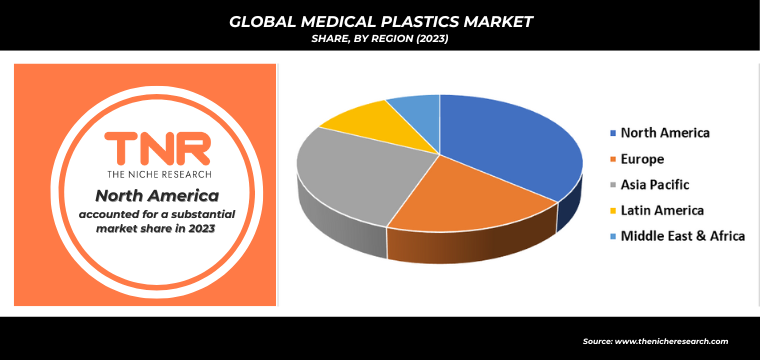
Competitive Landscape
Medical plastics market is characterized by intense competition, with key players striving to maintain and expand their market presence through strategic initiatives such as mergers and acquisitions (M&A), new product launches, and partnerships.
In 2023, Eastman Chemical expanded its medical plastics portfolio by acquiring the medical segment of AdvanSix, a move aimed at strengthening its position in the high-performance polymers market. Eastman emphasizes innovation in medical-grade polymers and sustainable practices, focusing on products that offer high performance while meeting environmental regulations.
Some of the players operating in the medical plastics market are:
- ARAN BIOMEDICAL TEORANTA
- Avantor, Inc.
- Celanese Corporation
- Dow, Inc.
- Eastman Chemical Company
- Evonik Industries AG
- HMC Polymers Company Limited
- Nolato AB
- Orthoplastics Ltd
- Röchling SE & Co. KG
- SABIC
- Saint-Gobain
- Solvay S.A.
- Tekni-Plex, Inc.
- Trinseo
- Other Industry Participants
Global Medical Plastics Market Scope:
| Report Specifications | Details |
| Market Revenue in 2023 | US$ 53.4 Bn |
| Market Size Forecast by 2034 | US$ 128.2 Bn |
| Growth Rate (CAGR) | 8.3% |
| Historic Data | 2016 – 2022 |
| Base Year for Estimation | 2023 |
| Forecast Period | 2024 – 2034 |
| Report Inclusions | Market Size & Estimates, Market Dynamics, Competitive Scenario, Trends, Growth Factors, Market Determinants, Key Investment Segmentation, Product/Service/Solutions Benchmarking |
| Segments Covered | By Material Type, By Application, By Region |
| Regions Covered | North America, Europe, Asia Pacific, Middle East & Africa, Latin America |
| Countries Covered | U.S., Canada, Mexico, Rest of North America, France, The UK, Spain, Germany, Italy, Nordic Countries (Denmark, Finland, Iceland, Sweden, Norway), Benelux Union (Belgium, The Netherlands, Luxembourg), Rest of Europe, China, Japan, India, New Zealand, Australia, South Korea, Southeast Asia (Indonesia, Thailand, Malaysia, Singapore, Rest of Southeast Asia), Rest of Asia Pacific, Saudi Arabia, UAE, Egypt, Kuwait, South Africa, Rest of Middle East & Africa, Brazil, Argentina, Rest of Latin America |
| Key Players | ARAN BIOMEDICAL TEORANTA, Avantor, Inc., Celanese Corporation, Dow, Inc., Eastman Chemical Company, Evonik Industries AG, HMC Polymers Company Limited, Nolato AB, Orthoplastics Ltd, Röchling SE & Co. KG, SABIC, Saint-Gobain, Solvay S.A., Tekni-Plex, Inc., Trinseo |
| Customization Scope | Customization allows for the inclusion/modification of content pertaining to geographical regions, countries, and specific market segments. |
| Pricing & Procurement Options | Explore purchase options tailored to your specific research requirements |
| Contact Details | Consult With Our Expert
Japan (Toll-Free): +81 663-386-8111 South Korea (Toll-Free): +82-808- 703-126 Saudi Arabia (Toll-Free): +966 800-850-1643 United Kingdom: +44 753-710-5080 United States: +1 302-232-5106 E-mail: askanexpert@thenicheresearch.com
|
Global Medical Plastics Market
By Material Type
- Polycarbonates (PC)
- Polypropylene (PP)
- Polyethylene (PE)
- Polyvinylchloride (PVC)
- Acrylonitrile Butadiene Styrene (ABS)
- Polyethylene Terephthalate Glycol (PETG)
- Polystyrene (PS)
- Polymethyl Methacrylate (PMMA)
- Others
By Application
- Medical Packaging
- Medical Devices
- Implants
- Diagnostic Components
- Dental Devices
- Wearable Medical Devices
- Surgical Instruments
- Disposable Medical Supplies
- Drug Delivery Systems
- Others
By Region
- North America (U.S., Canada, Mexico, Rest of North America)
- Europe (France, The UK, Spain, Germany, Italy, Nordic Countries (Denmark, Finland, Iceland, Sweden, Norway), Benelux Union (Belgium, The Netherlands, Luxembourg), Rest of Europe)
- Asia Pacific (China, Japan, India, New Zealand, Australia, South Korea, Southeast Asia (Indonesia, Thailand, Malaysia, Singapore, Rest of Southeast Asia), Rest of Asia Pacific)
- Middle East & Africa (Saudi Arabia, UAE, Egypt, Kuwait, South Africa, Rest of Middle East & Africa)
- Latin America (Brazil, Argentina, Rest of Latin America)
Report Layout:
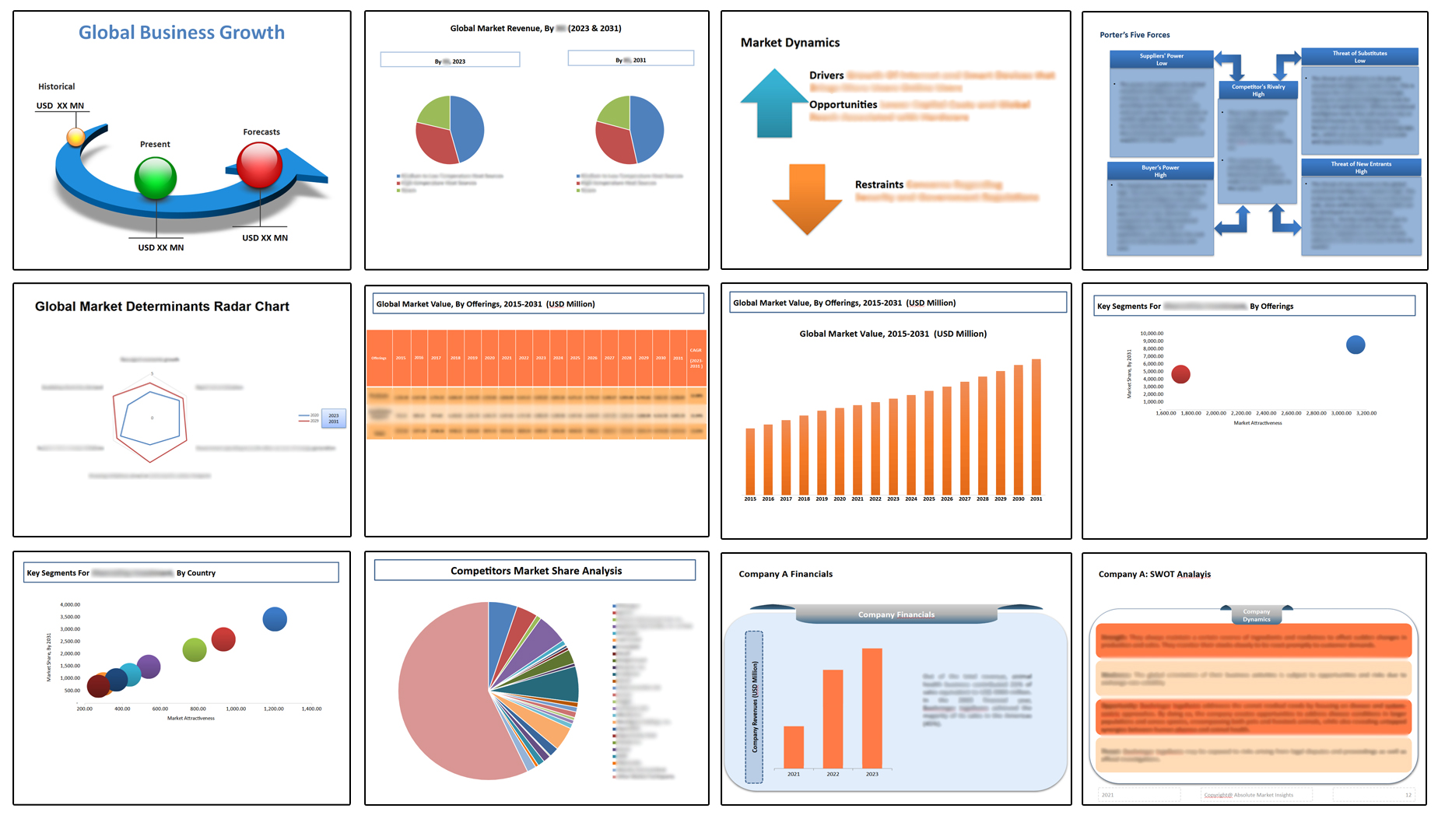
Table of Contents
Note: This ToC is tentative and can be changed according to the research study conducted during the course of report completion.
**Exclusive for Multi-User and Enterprise User.
Global Medical Plastics Market
By Material Type
- Polycarbonates (PC)
- Polypropylene (PP)
- Polyethylene (PE)
- Polyvinylchloride (PVC)
- Acrylonitrile Butadiene Styrene (ABS)
- Polyethylene Terephthalate Glycol (PETG)
- Polystyrene (PS)
- Polymethyl Methacrylate (PMMA)
- Others
By Application
- Medical Packaging
- Medical Devices
- Implants
- Diagnostic Components
- Dental Devices
- Wearable Medical Devices
- Surgical Instruments
- Disposable Medical Supplies
- Drug Delivery Systems
- Others
By Region
- North America (U.S., Canada, Mexico, Rest of North America)
- Europe (France, The UK, Spain, Germany, Italy, Nordic Countries (Denmark, Finland, Iceland, Sweden, Norway), Benelux Union (Belgium, The Netherlands, Luxembourg), Rest of Europe)
- Asia Pacific (China, Japan, India, New Zealand, Australia, South Korea, Southeast Asia (Indonesia, Thailand, Malaysia, Singapore, Rest of Southeast Asia), Rest of Asia Pacific)
- Middle East & Africa (Saudi Arabia, UAE, Egypt, Kuwait, South Africa, Rest of Middle East & Africa)
- Latin America (Brazil, Argentina, Rest of Latin America)
The Niche Research approach encompasses both primary and secondary research methods to provide comprehensive insights. While primary research is the cornerstone of our studies, we also incorporate secondary research sources such as company annual reports, premium industry databases, press releases, industry journals, and white papers.
Within our primary research, we actively engage with various industry stakeholders, conducting paid interviews and surveys. Our meticulous analysis extends to every market participant in major countries, allowing us to thoroughly examine their portfolios, calculate market shares, and segment revenues.
Our data collection primarily focuses on individual countries within our research scope, enabling us to estimate regional market sizes. Typically, we employ a bottom-up approach, meticulously tracking trends in different countries. We analyze growth drivers, constraints, technological innovations, and opportunities for each country, ultimately arriving at regional figures.Our process begins by examining the growth prospects of each country. Building upon these insights, we project growth and trends for the entire region. Finally, we utilize our proprietary model to refine estimations and forecasts.
Our data validation standards are integral to ensuring the reliability and accuracy of our research findings. Here’s a breakdown of our data validation processes and the stakeholders we engage with during our primary research:
- Supply Side Analysis: We initiate a supply side analysis by directly contacting market participants, through telephonic interviews and questionnaires containing both open-ended and close-ended questions. We gather information on their portfolios, segment revenues, developments, and growth strategies.
- Demand Side Analysis: To gain insights into adoption trends and consumer preferences, we reach out to target customers and users (non-vendors). This information forms a vital part of the qualitative analysis section of our reports, covering market dynamics, adoption trends, consumer behavior, spending patterns, and other related aspects.
- Consultant Insights: We tap into the expertise of our partner consultants from around the world to obtain their unique viewpoints and perspectives. Their insights contribute to a well-rounded understanding of the markets under investigation.
- In-House Validation: To ensure data accuracy and reliability, we conduct cross-validation of data points and information through our in-house team of consultants and utilize advanced data modeling tools for thorough verification.
The forecasts we provide are based on a comprehensive assessment of various factors, including:
- Market Trends and Past Performance (Last Five Years): We accurately analyze market trends and performance data from preceding five years to identify historical patterns and understand the market’s evolution.
- Historical Performance and Growth of Market Participants: We assess the historical performance and growth trajectories of key market participants. This analysis provides insights into the competitive landscape and individual company strategies.
- Market Determinants Impact Analysis (Next Eight Years): We conduct a rigorous analysis of the factors that are projected to influence the market over the next eight years. This includes assessing both internal and external determinants that can shape market dynamics.
- Drivers and Challenges for the Forecast Period:Identify the factors expected to drive market growth during the forecast period, as well as the challenges that the industry may face. This analysis aids in deriving an accurate growth rate projection.
- New Acquisitions, Collaborations, or Partnerships: We keep a close watch on any new acquisitions, collaborations, or partnerships within the industry. These developments can have a significant impact on market dynamics and competitiveness.
- Macro and Micro Factors Analysis:A thorough examination of both macro-level factors (e.g., economic trends, regulatory changes) and micro-level factors (e.g., technological advancements, consumer preferences) that may influence the market during the forecast period.
- End-User Sentiment Analysis: To understand the market from the end-user perspective, we conduct sentiment analysis. This involves assessing the sentiment, preferences, and feedback of the end-users, which can provide valuable insights into market trends.
- Perspective of Primary Participants: Insights gathered directly from primary research participants play a crucial role in shaping our forecasts. Their perspectives and experiences provide valuable qualitative data.
- Year-on-Year Growth Trend: We utilize a year-on-year growth trend based on historical market growth and expected future trends. This helps in formulating our growth projections, aligning them with the market’s historical performance.
Research process adopted by TNR involves multiple stages, including data collection, validation, quality checks, and presentation. It’s crucial that the data and information we provide add value to your existing market understanding and expertise. We have also established partnerships with business consulting, research, and survey organizations across regions and globally to collaborate on regional analysis and data validation, ensuring the highest level of accuracy and reliability in our reports.


